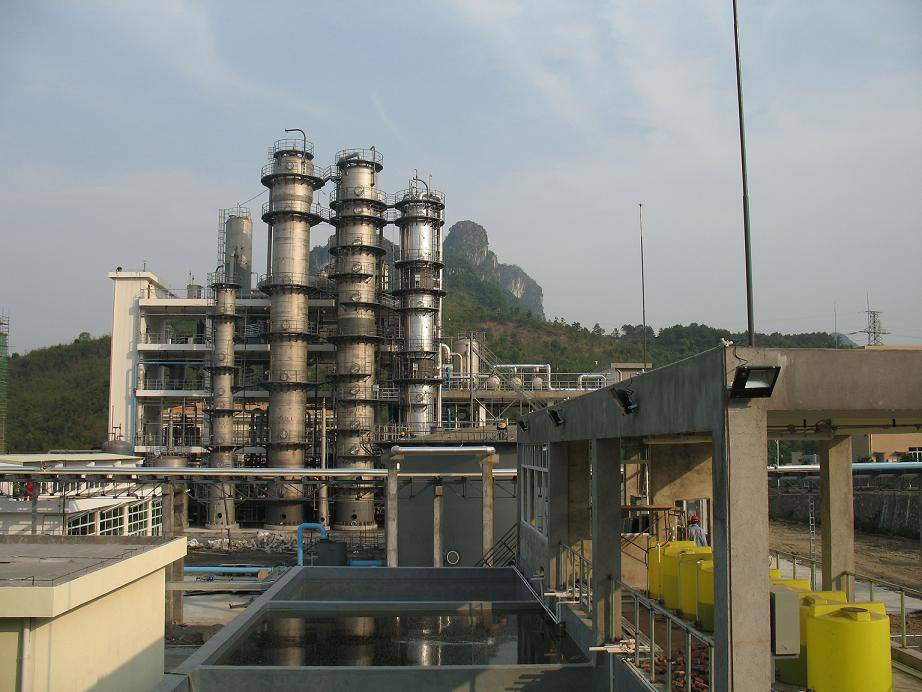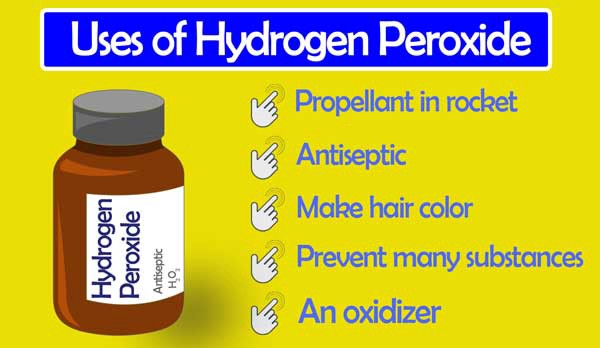Before we explore how hydrogen peroxide is made, let’s look at what it is. Hydrogen peroxide (chemical symbol H2O2 – it’s basically water with an extra oxygen atom!) is a weakly acidic, colourless liquid which can easily be mixed with water. It can also be pale blue in its pure form, although as it is an unstable compound and decomposes when exposed to heat, it is usually kept in a slightly acidic solution in the presence of a stabiliser.
Physical Properties:
Pure H2O2 is a colorless odorless thick and transparent fluid. In large amounts, its color appears to be light blue.
Its boiling point is 151 °C and the freezing point is -0.89 °C. It rapidly decomposes at its boiling point. Hence its distillation is done at low pressure. Its boiling point is 68 °C at 26mm pressure.
Its relative density is 1.4694 at 0 °C and its relative density at 25 °C is 1.64.
It is soluble in water, ether and alcohol.
This puts blisters on the skin.

How Is Hydrogen Peroxide Produced?
Hydrogen peroxide is primarily produced industrially through the "anthraquinone process," where an organic compound called anthraquinone acts as a catalyst to facilitate the reaction between hydrogen and oxygen from air, effectively creating hydrogen peroxide; this process is considered the most efficient method for large-scale production.
The Step-by-Step Process Of Making Hydrogen Peroxide
To put it in more complex terms, hydrogen peroxide is generally made according to this four-step process:
Hydrogenation on a palladium catalyst creates a reaction between hydrogen and anthraquinone which produces anthrahydroquinone.
The palladium catalyst is filtered out of the solution.
Oxidation takes place by blowing air through the solution, forming hydrogen peroxide.
The hydrogen peroxide is extracted, purified, and then concentrated by vacuum distillation.
Hydrogen peroxide also occurs naturally in surface and groundwater, as well as in the atmosphere. It is also made in humans and animals as a part of biochemical processes.
Auto-Oxidation Method
This is the modern method of making Hydrogen peroxide in large quantities. In this, 2-Ethyl-anthraquinone is dissolved in an organic solvent and it is reduced to hydrogen in the presence of Pd. The 2-Ethyl-anthraquinone derived from this action changes again to 2-Ethyl-anthraquinone. And H2O2 is obtained.
The industrial manufacture of H2O2 can be achieved by steam distillation at a low pressure of Perdisulphuric Acid. About 30% solution of H2O2 is obtained by this method.
Over 99% of the world’s hydrogen peroxide is manufactured by an autoxidation process. While the overall equation for this process is fairly simple (H2 + O2 -> H2O2), there is obviously a lot more to it than that!
Merck's Method
Barium peroxide is carried in cold water and carbon dioxide gas flows into the solution. By releasing carbon dioxide, barium carbonate precipitate is obtained which is separated. H2O2 remains in the solution.
BaO2 + H2O + CO2 → BaCO3 + H2O2
Hydrated barium peroxide
H2O2 is obtained when hydrated barium peroxide reacts with dilute sulfuric acid. Hydrated barium peroxide (BaO 2.8H2O) reacts readily with sulfuric acid and the reaction does not slow down due to the formation of insoluble barium sulfate in this method.
Electrolytic Process
In this method, ammonium sulfate and dilute sulfuric acid solution are electrolytic. In electrolytic, hydrogen is obtained at the cathode and Ammonium persulfate ((NH 4) 2S 2O 8) at the anode.
NH4HSO4 → NH4SO4-+ H+ H++ e → H Cathode 2H → H2 2NH4SO4–2e → (NH4)2S2O8 Anode
H2O2 is obtained by distillation of Ammonium persulfate with dilute sulfuric acid at low pressure.
(NH4)2S2O8 + H2SO4 → H2S2O8 + (NH4)2SO4
What Makes Hydrogen Peroxide Foam?
Hydrogen peroxide is used as an antiseptic as it kills bacteria. When you put hydrogen peroxide on a cut, you might notice that it starts to foam. That’s because the chemical breaks down when it comes into contact with blood. An enzyme in your blood called catalase attacks the hydrogen peroxide, turning it into oxygen and water.
Safe Storage of Hydrogen Peroxide
Hydrogen peroxide should be stored in a cool (between 5-25°C), dry area away from heat and direct sunlight, and kept well away from anything flammable as it can increase the risk or intensity of fire even though it doesn’t burn itself. It should be stored in a stable container made of plastic or glass (metal containers should not be used as hydrogen peroxide can react with metals).
Uses of Hydrogen Peroxide
►It is used in bleaching hair, wool, etc. as bleaching.
►Being antiseptic, it is used to clean wounds, ears, teeth etc.
►It is used as propellant in rocket.
►As an oxidizer
►H2O2 is used to make hair color golden.
►It is used to prevent many substances like milk wine etc. from rotting.
►Used in retrieving the colors of old paintings of oil-dyed dyes.

If you'd like to discuss your hydrogen peroxide requirements, contact our friendly team.

















